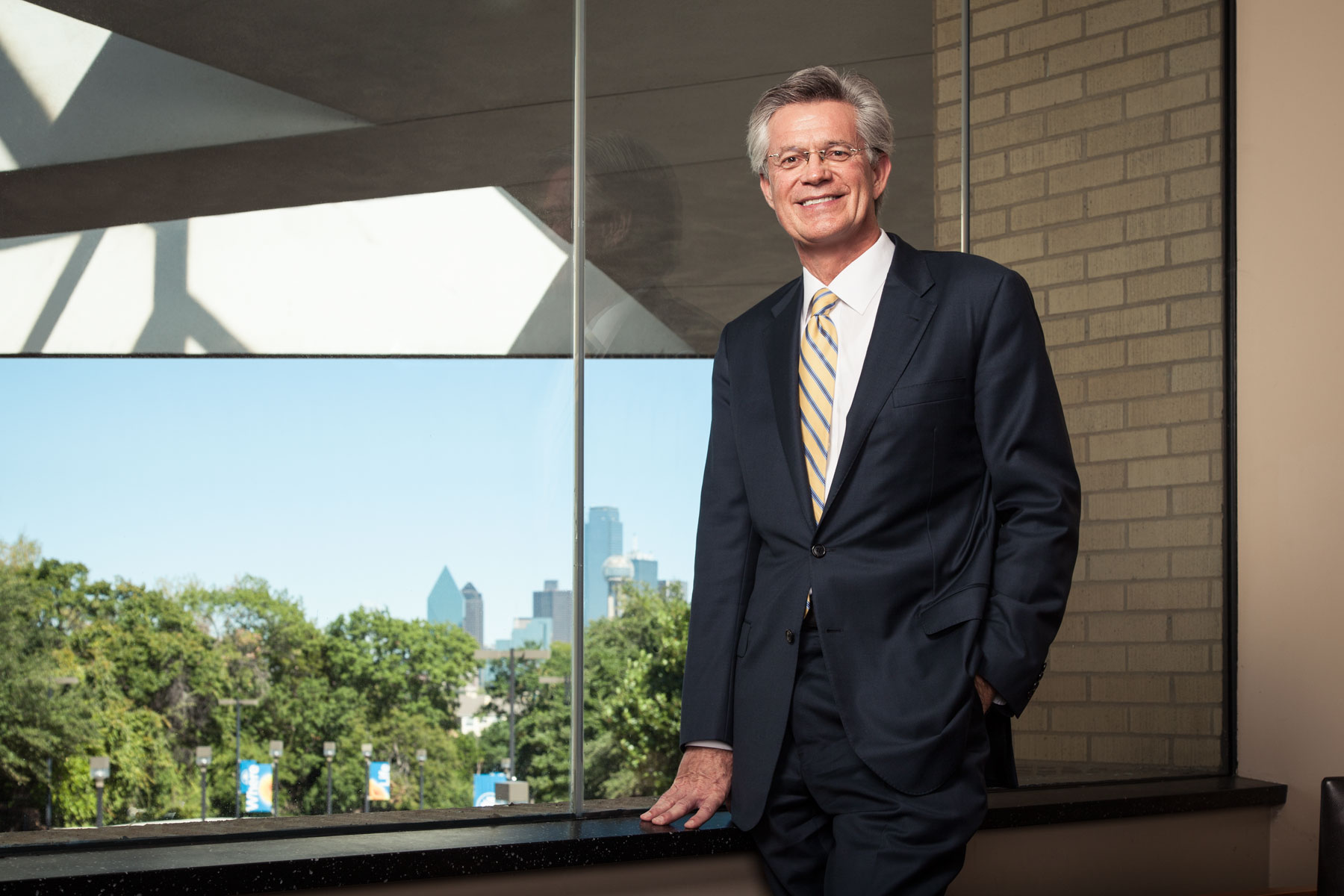
ACHIEVEMENT IN MEDICAL DEVICES/TECHNOLOGY
John Olajide
President and CEO
Axxess Technology Solutions Inc.
Sometimes all it takes to change one’s life is a little curiosity. While running an errand one day some years ago, John Olajide, then a telecommunications engineering student at the University of Texas at Dallas, discovered that a home health agency where his aunt was nursing director lacked a network to link all of its computers. Olajide, a Nigerian native and computer lover, got the boss to pay him to enable all the agency’s computers to talk to each other.
Thus began a journey for Olajide, now 33, that resulted in the 2009 creation of Axxess Technology Solutions Inc. The Dallas company provides a range of software over the Internet that helps automate many of the administrative chores that home health agencies once had to do on paper. Among them: taking care of medical records, finances, human resources, scheduling, and communications with physicians. Axxess’ technology even helps prevent fraud, a major issue in the home health industry.
Taking care of all that, in turn, enables those businesses to spend more time on patients, resulting in the provision of better healthcare.
With revenue doubling yearly and zero debt, Olajide’s biggest problem is handling Axxess’ rapid growth. At press time, Olajide was planning to move the company headquarters into a larger, 25,000-square-foot space that he says may already be too small. (Luckily, he’s got right of first refusal on additional space within the larger facility.)
Olajide has plans to add another 100 people to Axxess’ 120-person staff. He also has hired investment bankers to seek additional capital for the business. “We’re growing so fast, sometimes running a business feels like sitting on a rocket,” he says.
—Jeff Bounds
FINALISTS: Ampcare, Cariloop
OUTSTANDING MEDICAL REAL ESTATE PROJECT
William P.Clements Jr. University Hospital
UT Southwestern Medical Center
UT Southwestern Medical Center’s new hospital is evidence that a top-down approach to healthcare construction is kaput.
It was important to UTSW’s board of directors that the William P. Clements Jr. University Hospital be more than a mere replacement for the aging and consistently at-capacity St. Paul University Hospital. It needed to be a functional statement. To accomplish that, leaders brought all stakeholders to the table: physicians, nurses, administrators, and, most important, patients.
Out of this process came a 12-story, 1.3-million-square-foot, W-shaped teaching hospital, designed by global architecture firm firm RTKL. As UTSW President Dr. Daniel K. Podolsky said, one of the goals was giving the facility a more human scale.
Stretched out, the hospital would be the length of two football fields. Its unique W-shaped design reduces travel distances for physicians and allows the floors to be separated into four units with 16 beds each.
It’s also forward thinking, as a teaching hospital should be. According to the Association of American Medical Colleges, the United States faces a physician shortage that could reach 130,600 by 2025. The Clements Hospital may not be able to address that shortage on its own, but it’s doing its part.
Upgraded technology complements care, right down to the iPhones carried by the nurses and the streaming capabilities in the operating suites. All this is capped off by the 35,000 square feet of dedicated educational space—perfect for soaking up knowledge from the six Nobel Prize recipients on faculty.
—Matt Goodman
FINALISTS: Forest Park Medical Center Southlake, Parkland Clinic at Hatcher Station
ACHIEVEMENT IN COMMUNITY OUTREACH
Blue Cross and Blue Shield of Texas
Sweeping changes brought about by the Affordable Care Act called for an unprecedented effort by Blue Cross and Blue Shield of Texas to educate consumers about the law and how it could work for them.
BCBSTX launched its Be Covered Texas campaign in the spring of 2013—ahead of the initial Health Insurance Marketplace enrollment period in October—after research revealed that consumers were wary, confused, and uninformed about the law.
The campaign partnered with community organizations to distribute information about healthcare reform in all 254 Texas counties, including bilingual materials for the Hispanic population.
“There is a transformation occurring in America’s healthcare system, and we knew educating consumers about that was going to be a big job,” says BCBSTX Vice President and Chief Medical Officer, Dr. Dan McCoy. “Working with our community partners was an incredible experience and it helped us to identify the unique needs of [consumers].”
By April 2014, BCBSTX and its partners had participated in 349 events attended by more than 1.3 million people, including two “Care Fair” health and wellness events in Houston and Dallas. The campaign didn’t stop there.
“As part of ongoing efforts to help engage and educate the more than 700,000 newly insured Texans, Be Covered Texas has expanded its programs,” says BCT chair Michelle Riddell, vice president of strategic communications and community investment. BCT now “is working with nearly 170 community partners statewide and more than 65 in Dallas to help consumers understand how to get the most value from their healthcare coverage.”
—Glenda Vosburgh
FINALISTS: Diabetes Health and Wellness Institute at Juanita J. Craft Recreation Center, MyCare Personal Assistance, Southwest Transplant Alliance

ACHIEVEMENT IN HEALTHCARE INNOVATION
Dr. Hubert Zajicek
Executive Director, Co-Founder, and Partner
Health Wildcatters LLC
By most measures, Dr. Hubert Zajicek had it made. A doctorate in medicine. An MBA from the Cox School of Business at Southern Methodist University. And a faculty position at the University of Texas Southwestern Medical Center, where he was a principal investigator with funding from the federal National Institutes of Health.
In short, there was little on the education or career front that Zajicek lacked. Except for one thing: He wanted to be an entrepreneur.
Thus began a 90-degree detour in Zajicek’s career path, ultimately leading to his current position as co-founder, partner, and executive director of Dallas-based Health Wildcatters LLC.
An affiliate of Tech Wildcatters LLC, Health Wildcatters is a “seed accelerator” for fledgling companies in the healthcare space. Entrepreneurs who have a cool idea for a business—and not much else—go through a 12-week boot camp where they get a $30,000 seed investment and mentorship from seasoned professionals on a variety of business issues.
Among the goals is to get the dozen or so companies in each boot camp ready to land larger investments. By that measure, Health Wildcatters is already a success. Its inaugural class, which graduated from the program in the fall of 2013, has already raised a total of more than $5 million.
—Jeff Bounds
FINALISTS: Stephen Cracknell, US Medical IT; Valerie Shoup, UT Southwestern Medical Center

ACHIEVEMENT IN PHARMACEUTICALS
Dr. David Mangelsdorf
Professor and Chair of Pharmacology
University of Texas Southwestern Medical Center
Investigator
Howard Hughes Medical Institute
Dr. Steven Kliewer
Professor of Molecular Biology and Pharmacology
UT Southwestern Medical Center
Nancy B. and Jake L. Hamon Distinguished Chair in Basic Cancer Research
More than one out of three adults in the United States is obese. That leads to millions of deaths each year from a host of related conditions that are largely preventable, including heart disease, stroke, type 2 diabetes, and certain types of cancer.
Fortunately, research by a team led by Dr. David Mangelsdorf of UT Southwestern Medical Center could help. Mangelsdorf, chair and professor of pharmacology, is looking into proteins called nuclear receptors, which flip genes on and off. These receptors serve as sensors in protecting human cells against unusually high levels of fats, such as cholesterol, according to the school.
Previous discoveries by Mangelsdorf’s team relate to the body’s governance of cholesterol, along with the regulation of its metabolism of fats and bile acids. That in turn could lead to new medications to combat high cholesterol and related diseases, according to the school.
The research that Mangelsdorf’s team is doing fits hand in glove with work by a group led by Dr. Steven Kliewer, a professor of molecular biology and pharmacology at UT Southwestern. Kliewer and his colleagues have discovered chemicals that would allow drugs to remain in the body’s circulation longer, thus making multi-drug treatments more effective.
Mangelsdorf and Kliewer have also discovered a hormone that can launch a process that results in the generation of body heat by burning fat.
—Jeff Bounds

LIFETIME ACHIEVEMENT AWARD
Doug Hawthorne
Founding CEO
Texas Health Resources
In the mid-to-late 1990s, North Texas was expanding in all directions. Residents were living in one community and working in another. Meanwhile, insurance companies were consolidating and growing. It was becoming hard for smaller healthcare systems and independent hospitals to survive.
Doug Hawthorne, then CEO of the Presbyterian Healthcare System, saw an opportunity to reshape healthcare delivery regionally. He did it by orchestrating the merger of Presbyterian in Dallas, Harris Methodist Health System in Fort Worth, and the Arlington Memorial Hospital.
Meet Texas Health Resources, now the nonprofit system that sees more patients than any other in Dallas-Fort Worth.
“How can we provide something that clearly was not available in North Texas in terms of coordinated care across a large geography?” Hawthorne asked before the merger. “Certainly, it was in our mind that we would have growth. But it would be planned growth around services and the coordination of care and outcomes.”
The three hospitals merged in 1997, and Hawthorne helmed THR until retiring this September. The new company’s board, made up of trustees from each of the three hospital systems, charged him with incorporating a strategic plan to integrate care across its North Texas properties.
His policies helped sell the physicians on a system strategy: They had access to patient information no matter where they sought care, so long as it was at a THR facility. And, last year, THR became the first in North Texas to publish system-wide quality metrics online.
“We created this word, ‘systemness,’” Hawthorne says, “It’s a fairly common term today, but for us, it was a concept of really one hospital with multiple sites, versus lots of individual hospitals scattered around.”
—Matt Goodman






